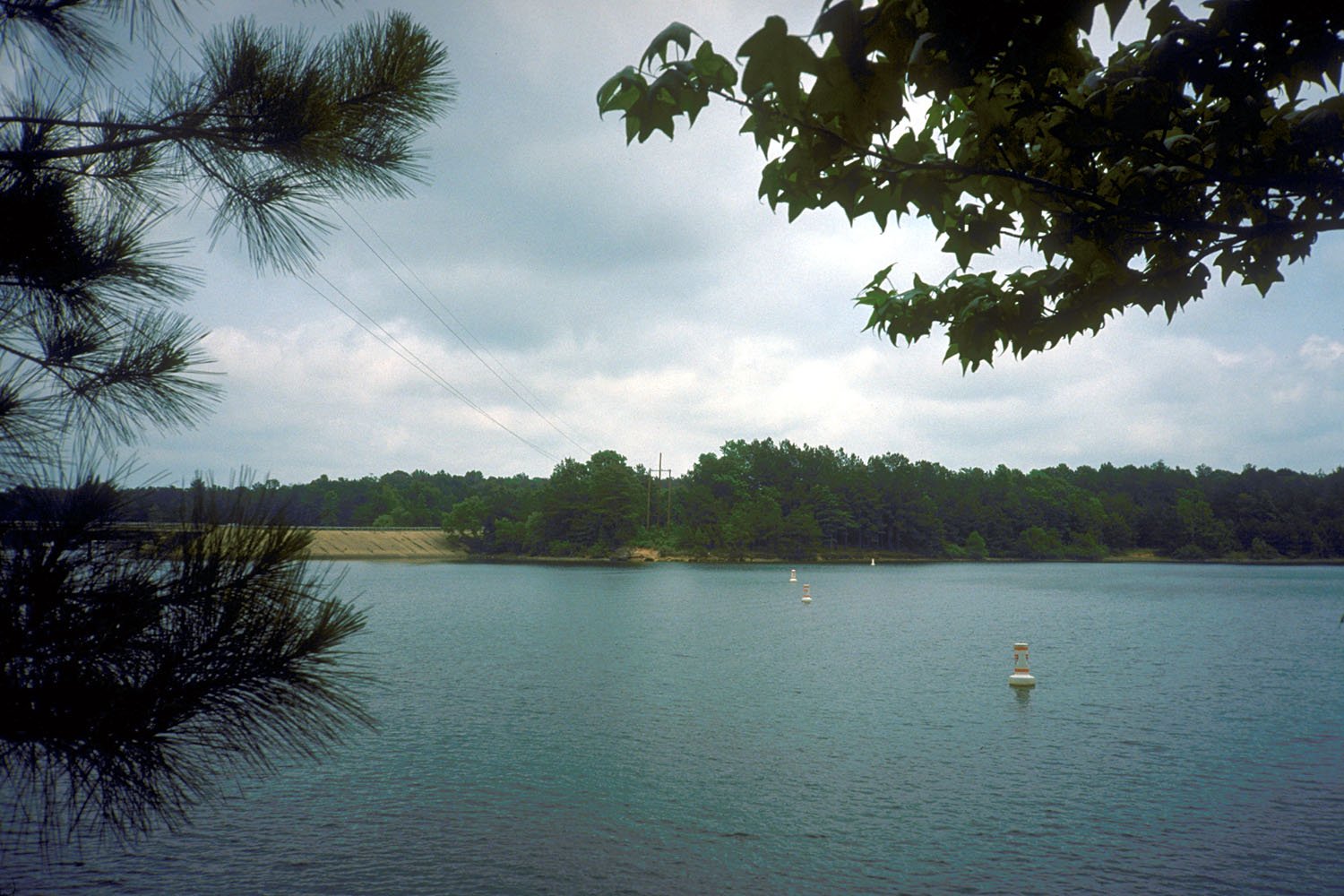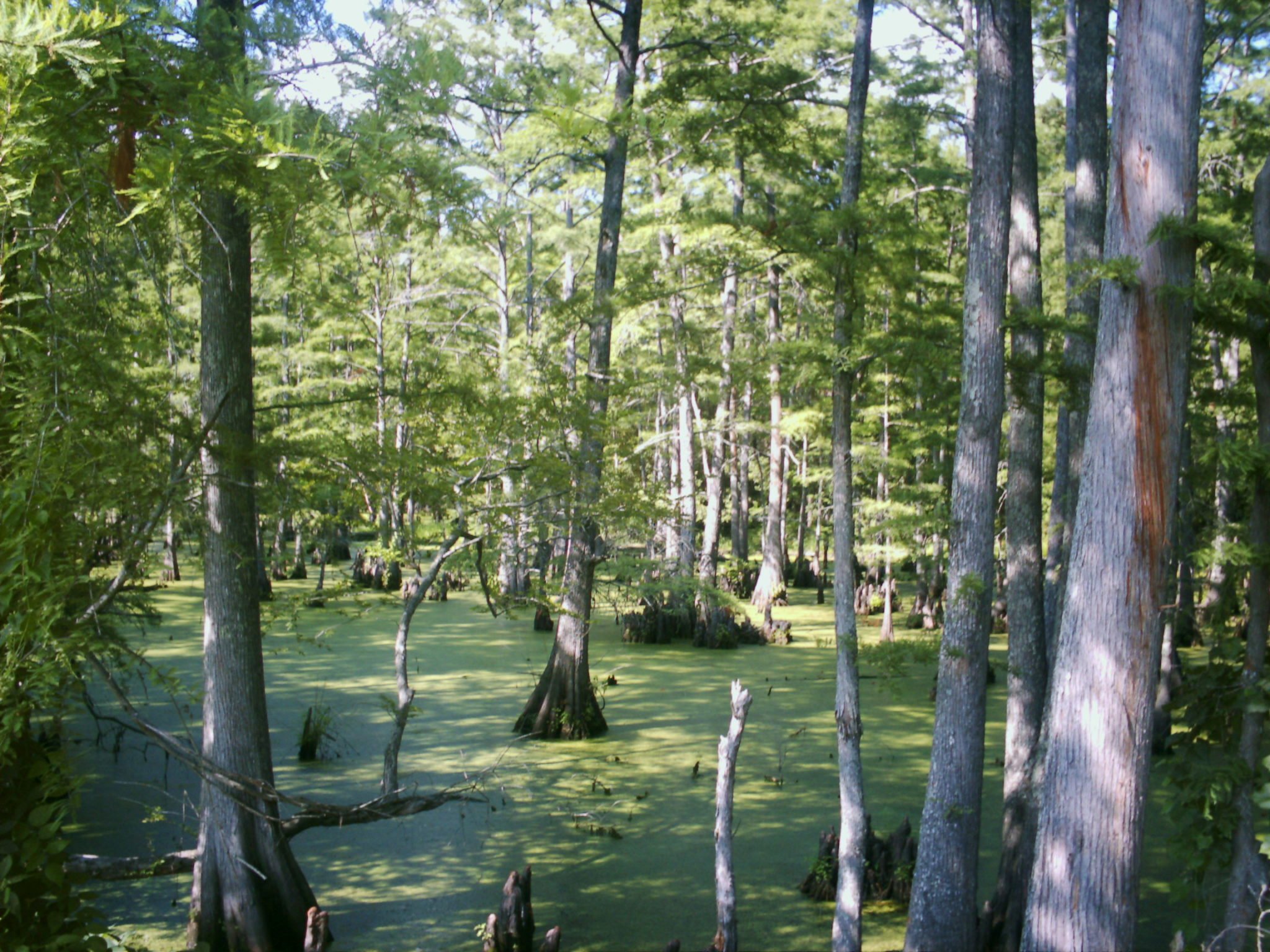
In East Texas, Chicken Plants are Polluting Rivers and Lakes with Oxygen-Sucking Contaminants
A report released by the Environmental Integrity Project identified Pilgrim’s Pride and Tyson as major dischargers of wastewater containing high levels of nitrogen and phosphorus.

Above: The Environmental Integrity Project report found that in 2017, the Pilgrim’s Pride facility Mt. Pleasant pushed an average of 1,755 pounds of nitrogen each day into tributaries of Lake O’ the Pines.
The Gulf of Mexico’s “dead zone” — a Connecticut-sized stretch of saltwater where chemical runoff from farms in the Mississippi River watershed feeds oxygen-stifling algal blooms — gets a lot of press. The low oxygen levels spur massive fish kills that disrupt the region’s lucrative fishing industry. The largest dead zone ever recorded cropped up in 2017.
But you’re less likely to hear about the areas of water with dangerously low levels of dissolved oxygen in rural waterways hundreds of miles inland. In East Texas, the nation’s biggest chicken growers reportedly are pushing high levels of nitrogen and phosphorus — the nutrients responsible for excessive algae growth — into rivers and lakes. That’s in addition to harmful bacteria and pathogens that wastewater from animal processing plants can contain, which sometimes find their way into the public water supply.
“This is just wrong. It’s a public waterway, not a drainage ditch for a bunch of factories.”
In a report released earlier this month, the Environmental Integrity Project, a Washington, D.C.-based advocacy group, identified two processing plants operated in East Texas by Tyson Farms and Pilgrim’s Pride as particularly heavy polluters. The group’s analysis showed that the Pilgrim’s Pride plant in Mt. Pleasant, an hour-and-a-half northeast of Tyler, discharged the third most nitrogen among large slaughterhouses nationwide in 2017. Discharges from that plant and the Tyson facility in Center, at the Texas-Louisiana state line, have both been linked to low dissolved oxygen levels in popular lakes.
It’s a problem you don’t hear about much because it happens in “rural areas where you don’t have major media coverage,” said Eric Schaffer, director of the Environmental Integrity Project. Meanwhile, Big Ag uses the lack of scrutiny to save money by pumping harmful contaminants into public water sources. “This is just wrong. It’s a public waterway, not a drainage ditch for a bunch of factories,” Schaffer said.
The EIP report found that in 2017, the Pilgrim’s Pride facility Mt. Pleasant pushed an average of 1,755 pounds of nitrogen each day into tributaries of Lake O’ the Pines, a popular fishing and boating destination that’s also a source of drinking water for several local communities. The typical meatpacking plant around the United States discharges less than a fifth of that amount — about 331 pounds a day.
The plant’s state environmental permit shows that before the Pilgrim’s discharges ever reach Lake O’ the Pines, the polluted wastewater traverses tributaries that have already been deemed vulnerable by Texas’ environmental regulatory agency. The discharges first flow through Tankersley Creek, which is “impaired” due to pathogens; they then run into Big Cypress Creek, which has a high bacteria load, before reaching the Lake O’ the Pines. The lake itself has struggled with dissolved oxygen levels “lower than the range optimal for supporting fish and other aquatic species,” according to the Texas Commission on Environmental Quality.

TCEQ has identified the Pilgrim’s Pride plant as the largest source of phosphorus and nitrogen in the Lake O’ the Pines watershed, contributing 88 percent and 73 percent of phosphorus and nitrogen loads, respectively. TCEQ recommended that the volume of phosphorus be cut in half, writing in a “total maximum daily load” plan that Pilgrim’s Pride and nearby towns be subjected to stricter phosphorus pollution limits and increased reporting requirements. But the plan is ultimately voluntary and permit restrictions sometimes aren’t enforced.
At its plant in Center, two hours southeast of Mt. Pleasant, Tyson Farms discharged large levels of blood and animal excrement into Cedar Creek — even though the wastewater is treated, it still contains enough waste to drive down oxygen levels. The contaminants eventually flow into Toledo Bend Reservoir, one of the top bass-fishing lakes in the nation. The U.S. Department of Agriculture has called nutrient loading by poultry operations in Toledo Bend’s watershed “a major concern.” As in Lake O’ the Pines, oxygen levels in the reservoir have previously been deemed “not optimal” for some aquatic life.
The EIP report found that Tyson’s Center facility violated its Clean Water Act permit 12 times in 2016 and 2017, incurring an $80,000 state fine for effluent violations. Five of the plant’s violations were related to dumping contaminants that tied up oxygen resources in the water; one was specifically related to nitrogen discharges.
“It’s extreme. These guys aren’t doing anything that isn’t moving backward.”
Sanderson Farms, another giant in the U.S. chicken industry, has been making inroads into East Texas. Last year, the company successfully negotiated tax abatement deals with local government officials and made moves to build a new processing plant just north of Tyler.
Stella Larson, a member of an East Texas advocacy group that opposes poultry CAFOs (concentrated animal feeding operations) in the area, said she’s worried about potential water contamination from Sanderson Farms’ monster chicken houses.
“You’ve got [manure and carcasses] sitting in a heap, then you’ve got rain and it just leaches down to the groundwater. That poses a health risk,” Larson said. “It can be so far-reaching.” The EIP report noted that along with large-scale surface water pollution, the waste produced by the companies can also put aquifers at risk, especially when companies are “spraying it on pasture or cropland where it can infiltrate groundwater.”
From 2016 to 2018, Sanderson Farms operated six plants nationwide that violated pollution permits, EIP found. At the same time, the Clean Water Act, the landmark law that governs discharges of wastewater from processing plants, is under attack by the Trump administration, which this year sought to roll back the regulation. “It’s extreme. These guys aren’t doing anything that isn’t moving backward,” Schaffer said.


